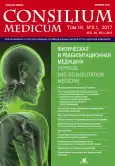Cerebral stroke continues to be an important medical and social problem. Often it is accompanied by depression, which, due to the reduction of initiative and motivation of patients, prevents their active participation in the rehabilitation activities. The purpose of this research is to study the effectiveness of the inclusion of dynamic electroneurostimulation (DENS) in the rehabilitation of persons in the acute period of ischemic stroke for the correction of psychoemotional disorders, such as post-stroke depression, anxiety and low level of motivation. Materials and methods. A total of 47 patients (24 men and 23 women, mean age 64.4±2.2 years) with acute ischemic stroke has been examined. A psychological and psychometric study in dynamics has been held (in accordance with BDI scores, Spielberger test, questionnaire “The motivation for success and motivation for fear of failure” - A.Rean's questionnaire). Clinical evaluation of neurological status was supplemented by scoring the neurological deficit on Lindmark scale. In addition to medical treatment, DENS therapy has been carried out for 15 days. Monitoring of the status of the control group of patients (36 people), corresponding to the study group by sex, age and severity of neurological symptoms, was conducted simultaneously. Patients in this group received only standard therapy. Results. The severity of depression and anxiety in the main group significantly decreased (by 4.0 points on Beck scale, and 8.6 points on Spielberger scale), while in the control group significant differences in indices were not detected (1.6 and 3.0 points, respectively). A.Rean's questionnaire analysis showed that during treatment, motivation level in the study group increased significantly, and the patients were oriented to success. While in the control group, significant changes in the level of motivation did not happened. Conclusion. Thus, the study showed that DENS is effective for the treatment of depression and anxiety among patients with ischemic stroke, and contributes to higher motivation of these patients.
 8-13
8-13


 14-16
14-16


 17-24
17-24


 25-30
25-30


 31-43
31-43


 44-48
44-48


 49-52
49-52


 53-55
53-55


 56-59
56-59


 60-63
60-63


 64-69
64-69


 70-77
70-77


 78-81
78-81


 82-85
82-85


 86-89
86-89


 90-93
90-93


 94-97
94-97


 98-101
98-101


 102-106
102-106







